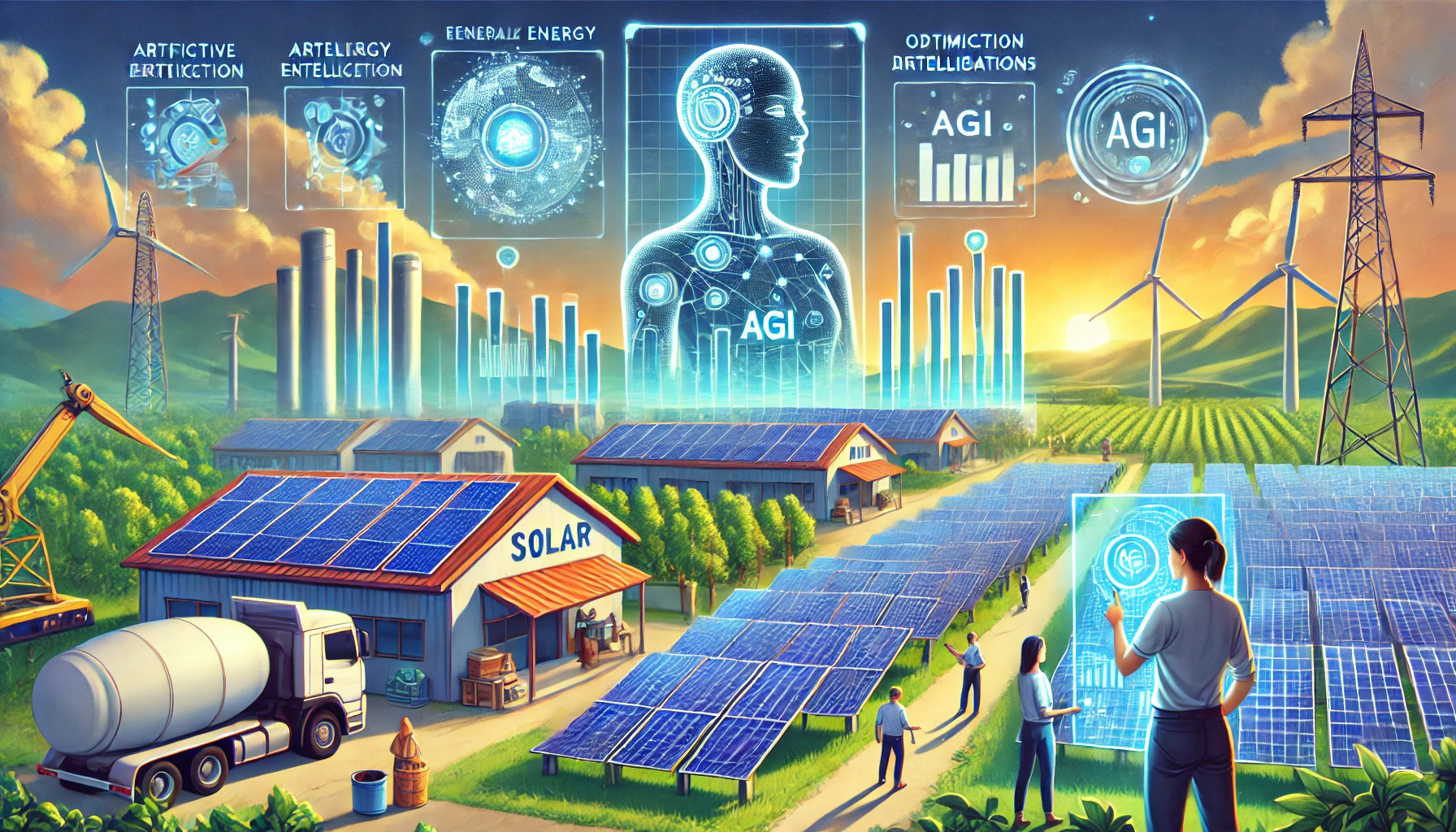As the global shift toward renewable energy intensifies, the Philippines—blessed with abundant sunlight—stands at the forefront of solar energy adoption. The integration of Artificial General Intelligence (AGI) into the solar energy sector presents an unprecedented opportunity for providers to maximize efficiency, profitability, and scalability. Here’s how AGI can revolutionize the solar energy industry in the Philippines.
1. Enhanced Efficiency Through Predictive Analytics
AGI systems excel in predictive analytics, analyzing vast amounts of data from weather patterns, energy consumption trends, and solar panel performance. For solar energy providers, this means:
- Optimized Solar Output: Predicting sunlight availability and adjusting systems accordingly.
- Proactive Maintenance: Identifying potential panel failures before they occur, reducing downtime.
- Energy Demand Forecasting: Aligning energy production with peak usage times to avoid surplus or shortages.
By leveraging AGI’s predictive capabilities, providers can enhance the overall efficiency of their systems, reducing operational costs and increasing customer satisfaction.
2. Smart Grid Integration
The Philippines faces challenges in electricity distribution due to its archipelagic nature. AGI-powered smart grids can:
- Balance Supply and Demand: Dynamically distribute solar energy to areas where it’s needed most.
- Prevent Power Outages: Predict grid stress and mitigate potential failures.
- Enable Microgrids: Support remote communities with localized solar solutions.
This smart integration ensures a seamless energy supply, improving reliability and accessibility while cutting costs.
3. Cost Reduction Through Automation
AGI can automate labor-intensive processes such as:
- Site Selection: Analyzing geographical and environmental data to identify optimal locations for solar farms.
- Design Optimization: Generating efficient layouts for solar panels to maximize energy capture.
- Billing and Customer Service: Automating invoicing and using AI chatbots to handle customer queries, reducing administrative overhead.
These efficiencies translate to significant cost savings, allowing providers to offer competitive pricing or reinvest in expanding their operations.
4. Personalized Energy Solutions
With AGI, providers can develop tailored energy solutions for individual customers by:
- Analyzing Usage Patterns: Creating customized energy plans based on consumption habits.
- Integrating Smart Home Technologies: Syncing solar systems with home devices to optimize energy usage.
- Dynamic Pricing Models: Offering flexible pricing schemes based on real-time energy market data.
Personalized services not only improve customer loyalty but also open doors to premium pricing models.
5. Enabling Innovative Business Models
AGI can drive innovation in business strategies, such as:
- Energy-as-a-Service (EaaS): Leasing solar equipment instead of selling, making solar energy accessible to low-income households.
- Peer-to-Peer Energy Trading: Using AGI to create decentralized platforms where excess solar energy can be sold directly to other consumers.
- Carbon Credit Marketplaces: Automating the certification and sale of carbon credits generated by solar installations.
These models enable solar providers to tap into new revenue streams, fostering growth and diversification.
6. Accelerating Research and Development
The rapidly advancing field of AGI can help solar providers stay ahead by:
- Simulating Technology Upgrades: Testing new materials and technologies in virtual environments before real-world implementation.
- Optimizing Storage Solutions: Improving battery storage systems to ensure a consistent energy supply during non-sunlight hours.
- Boosting Panel Efficiency: Refining solar panel designs to increase energy capture rates.
These advancements keep providers competitive in an evolving market.
7. Promoting Sustainability Goals
AGI can assist in monitoring and reporting on sustainability metrics, enabling providers to:
- Showcase Environmental Impact: Demonstrate reductions in carbon emissions and promote green initiatives.
- Align with Global Standards: Ensure compliance with international sustainability goals and attract eco-conscious investors.
- Educate and Engage Consumers: Use AGI-driven platforms to raise awareness about renewable energy benefits.
By positioning themselves as leaders in sustainability, providers can strengthen their brand and attract government incentives.
Challenges and Solutions
While the benefits of AGI are immense, solar energy providers in the Philippines may face challenges, such as high initial costs, data privacy concerns, and the need for skilled personnel. However, these can be mitigated through:
- Government Partnerships: Availing grants and incentives to offset costs.
- Cloud Solutions: Leveraging affordable, scalable cloud infrastructure for AGI deployment.
- Capacity Building: Training local talent to operate and maintain AGI systems.
Conclusion
For solar energy providers in the Philippines, AGI is not just a technological enhancement—it is a game-changer. By harnessing AGI’s capabilities, these providers can improve efficiency, reduce costs, and explore innovative business opportunities, all while contributing to the nation’s energy independence and sustainability goals. Early adoption of AGI will not only secure their position in a competitive market but also pave the way for a brighter, greener future.
[SEO optimized]


